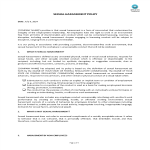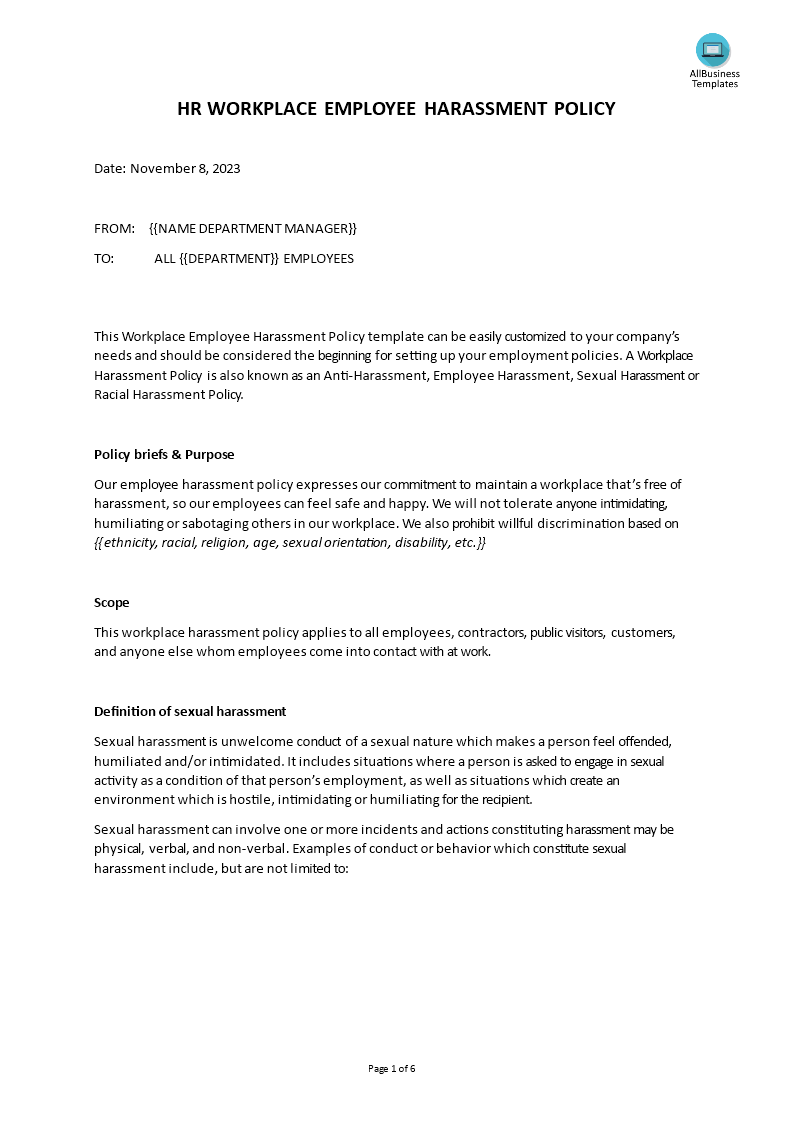HR Sexual Harassment Policy
Sponsored Link免费模板 保存,填空,打印,三步搞定!

Download HR Sexual Harassment Policy
微软的词 (.docx)免费文件转换
- 本文档已通过专业认证
- 100%可定制
- 这是一个数字下载 (36.45 kB)
- 语: English
Sponsored Link
How to deal with Sexual Harassment Complaints? What to do when the first sexual harassment complaint is received? Our template includes a comprehensive definition of sexual harassment and a detailed description of the steps to be taken to investigate and address any reported incidents. Download this HR Sexual Harassment Policy template now!
A Human Resources (HR) Sexual Harassment Policy, also known as a Workplace Sexual Harassment Policy, is a formal document developed and implemented by an organization to outline its stance on preventing and addressing sexual harassment in the workplace. This policy sets the standards for appropriate behavior, provides guidelines on reporting and addressing sexual harassment complaints, and establishes a framework for creating a safe and respectful work environment.
A comprehensive HR Sexual Harassment Policy typically includes the following elements:
- Definition of Sexual Harassment: The policy defines what constitutes sexual harassment, making it clear that it encompasses unwelcome advances, comments, requests for sexual favors, or any other verbal or physical conduct of a sexual nature that creates a hostile or intimidating work environment.
- Zero-Tolerance Statement: The policy should include a statement expressing the organization's commitment to a zero-tolerance approach toward sexual harassment. This means that all forms of sexual harassment will be taken seriously and addressed promptly.
- Reporting Procedure: The policy outlines the steps for reporting sexual harassment incidents, including whom employees should contact, the reporting process, and the assurance of confidentiality to the extent possible.
- Investigation Process: It describes the process for investigating sexual harassment complaints, which may involve HR personnel or external investigators. The policy should also specify the expected timeline for investigations.
- Consequences of Violations: The consequences for those found responsible for sexual harassment should be clearly stated, including disciplinary actions, up to and including termination, if appropriate.
- Protection Against Retaliation: The policy should emphasize that individuals who report sexual harassment are protected from any form of retaliation for coming forward with a complaint.
- Training and Education: Organizations are encouraged to include a section on the provision of sexual harassment prevention training to employees, which helps in raising awareness and promoting a harassment-free work environment.
- Responsibilities of Management: The policy should outline the responsibilities of supervisors, managers, and executives in preventing and addressing sexual harassment, including their role in reporting and supporting employees.
- Communication of the Policy: The policy should specify how it will be communicated to all employees, including new hires, and how it will be made available and accessible within the organization.
- Periodic Review: The organization should commit to reviewing and updating the policy regularly to ensure its effectiveness and compliance with legal requirements.
HR Sexual Harassment Policies are essential in promoting a safe and inclusive workplace culture. They also help organizations comply with legal requirements related to sexual harassment, such as those outlined in Title VII of the Civil Rights Act of 1964 in the United States. These policies should be communicated effectively to all employees, and training programs can further support their implementation and the prevention of sexual harassment in the workplace.
Click here if you are looking for a Checklist Sexual Harassment Investigation for your HR department. Alternatively you can use this example of a Sexual Harassment Complaint Letter for your reference.
DISCLAIMER
Nothing on this site shall be considered legal advice and no attorney-client relationship is established.
发表评论。 如果您有任何问题或意见,请随时在下面发布
相关文件
Sponsored Link


